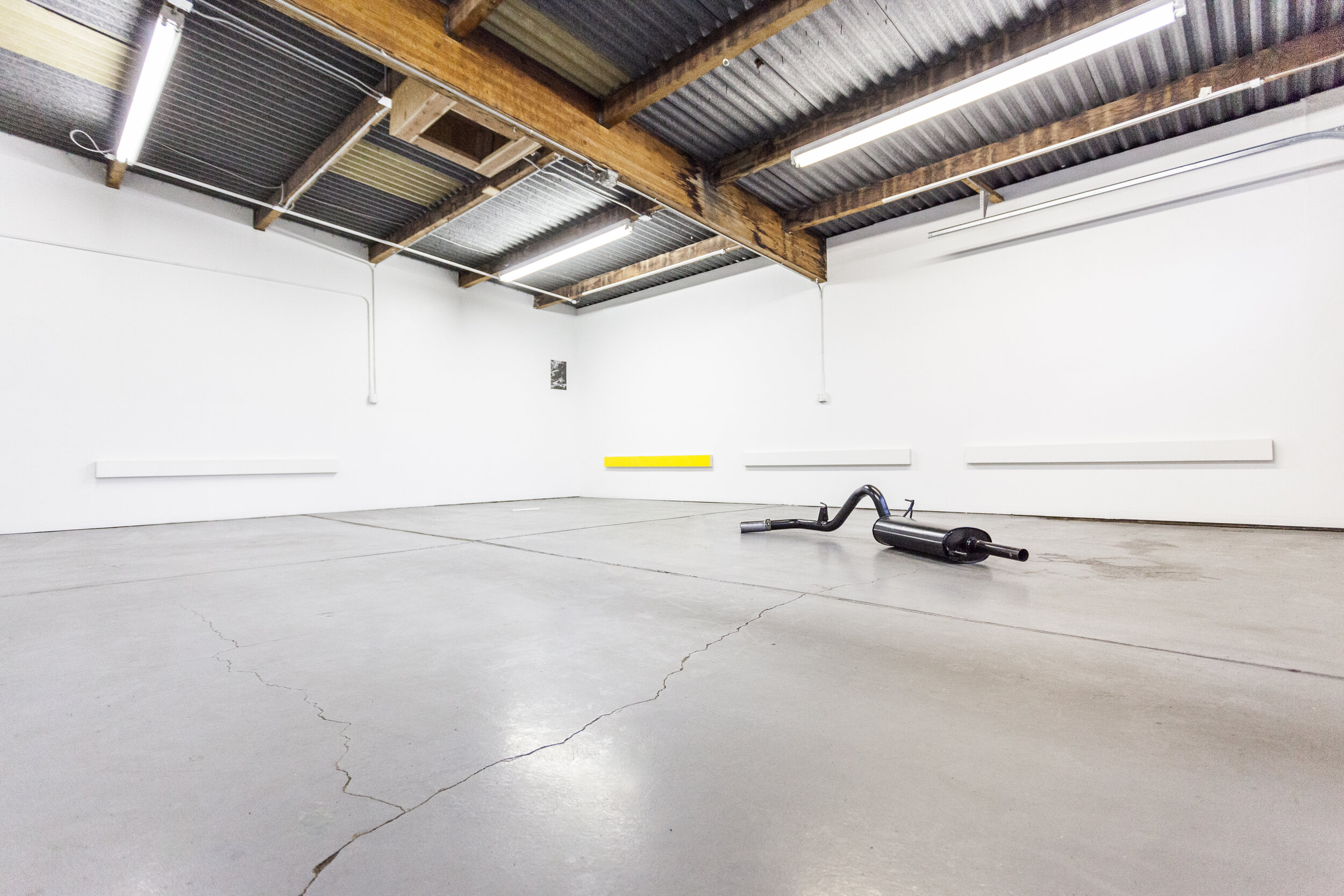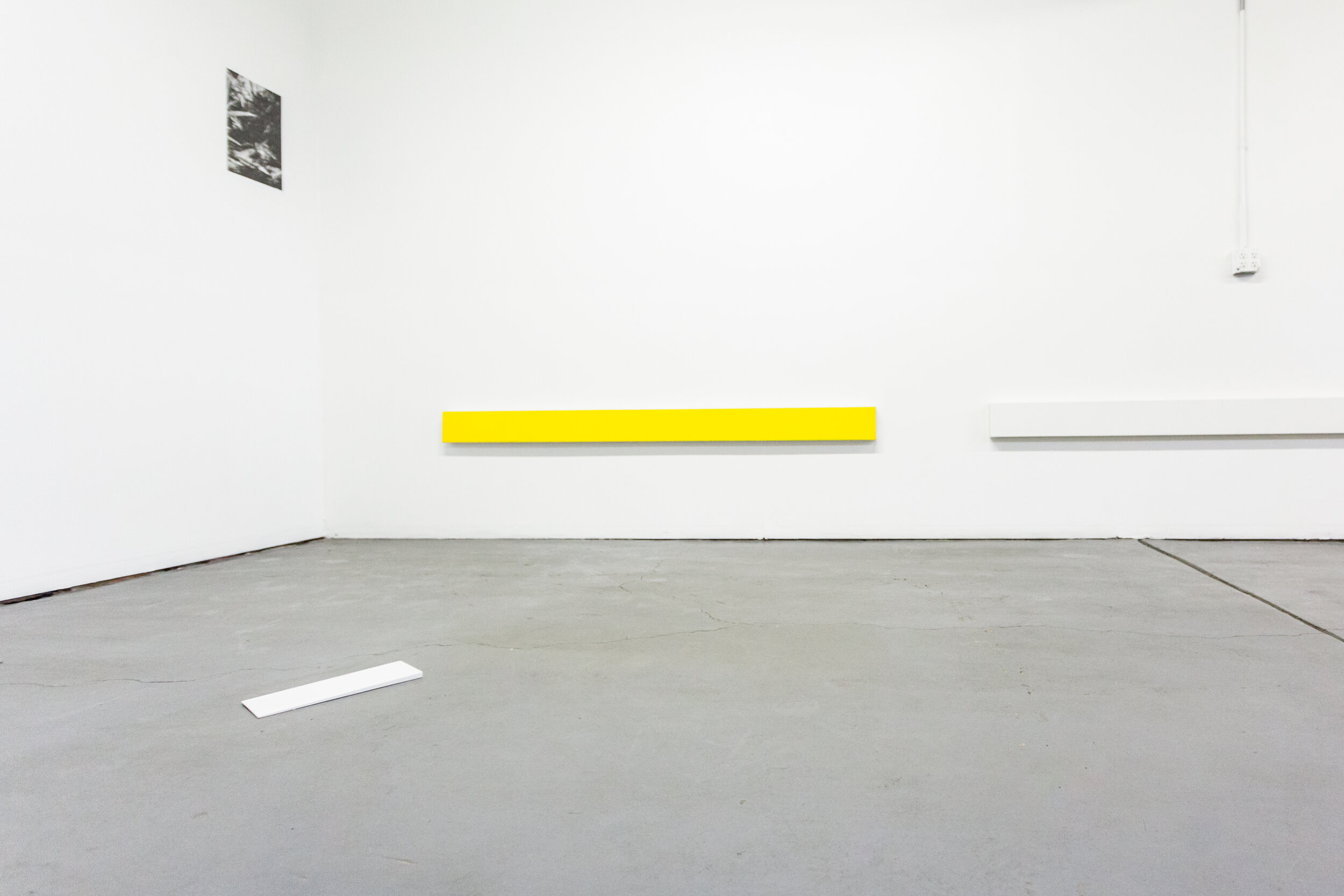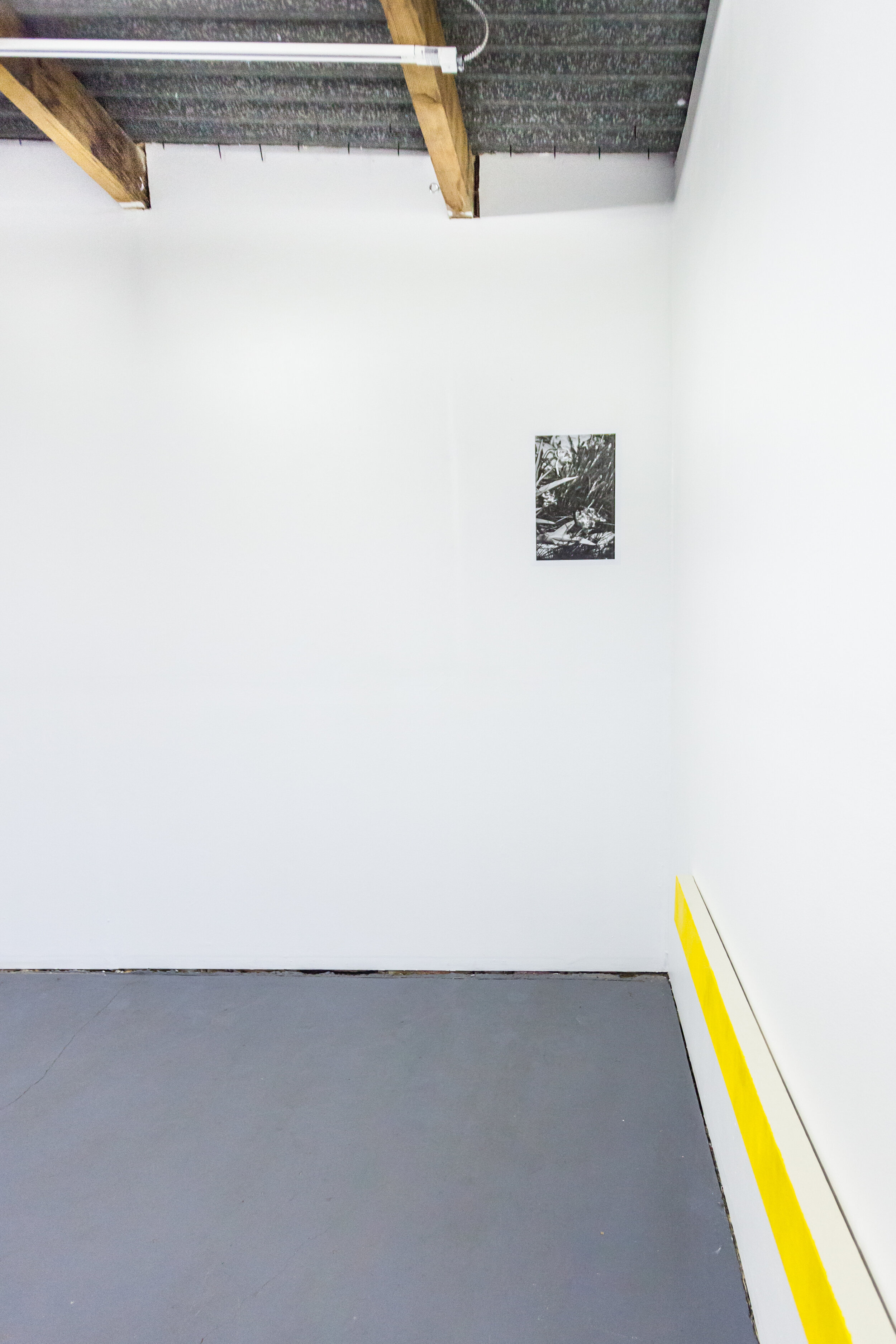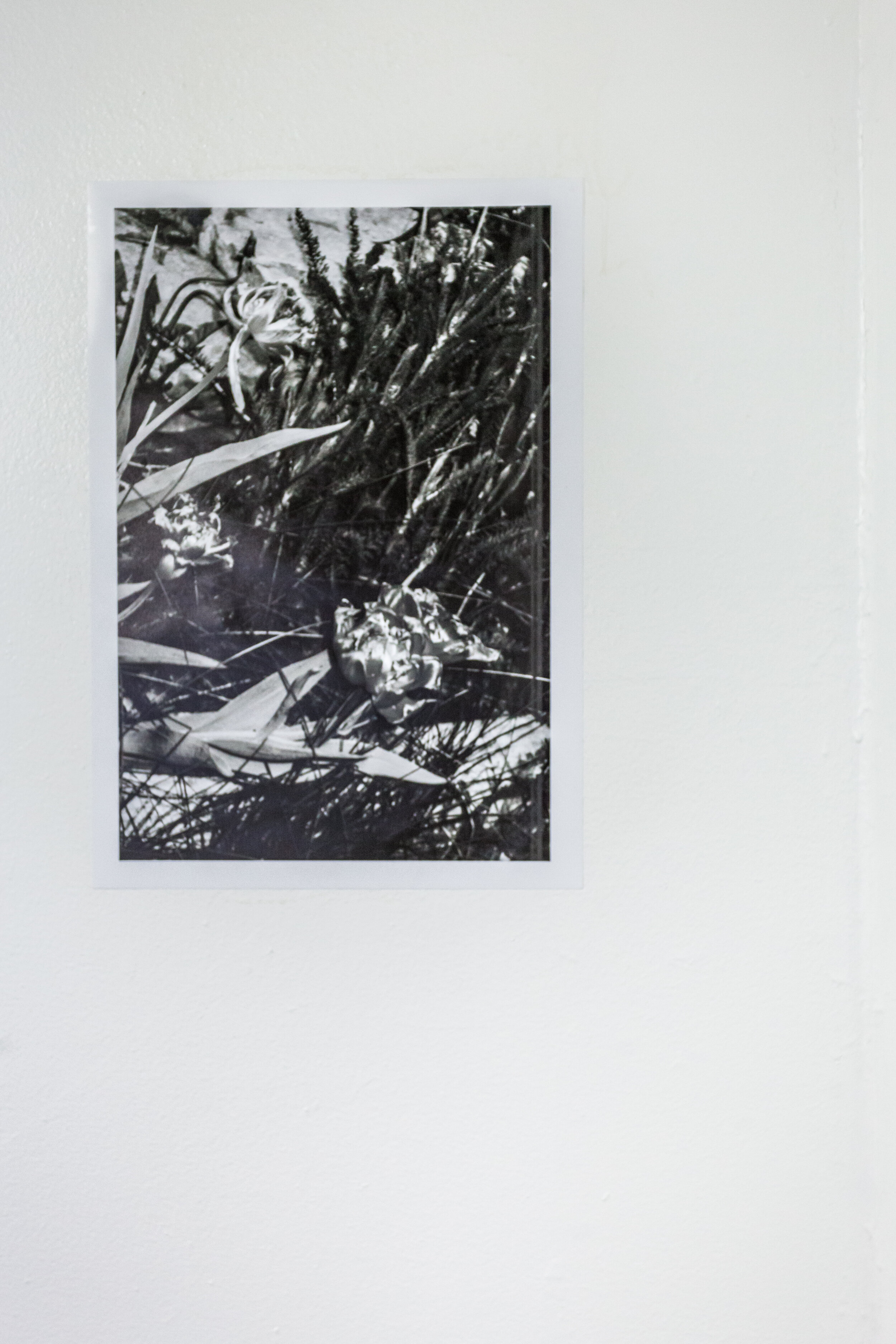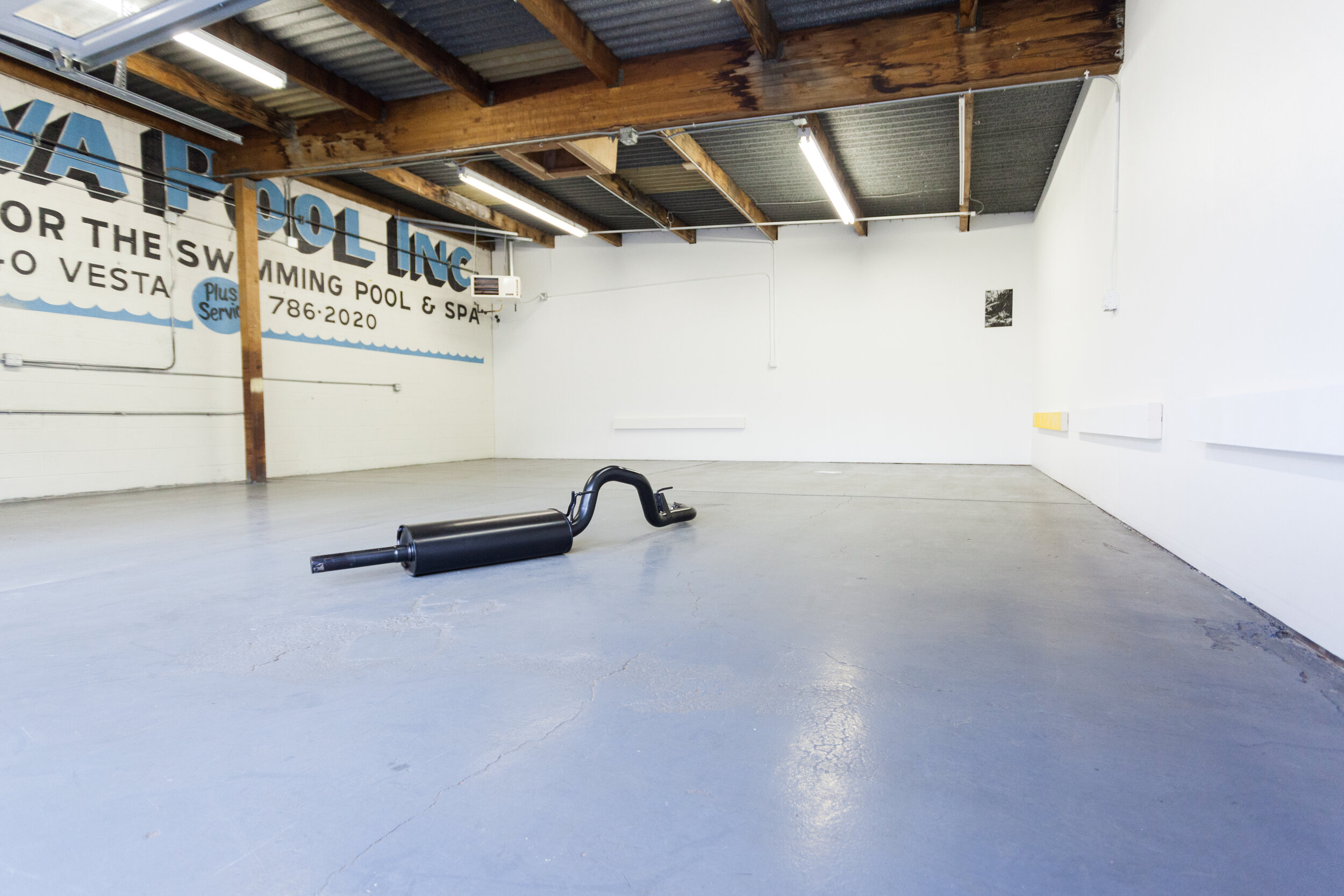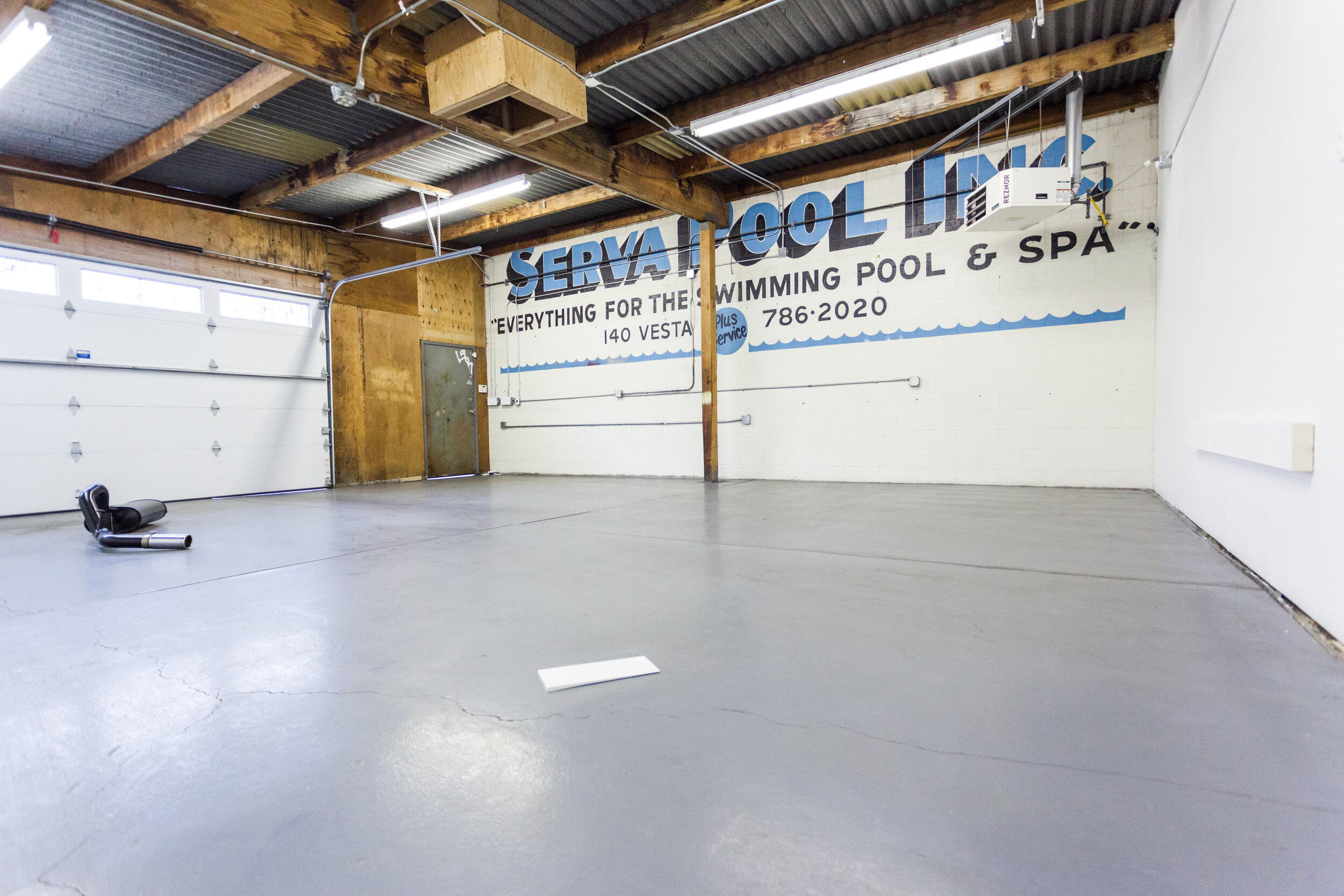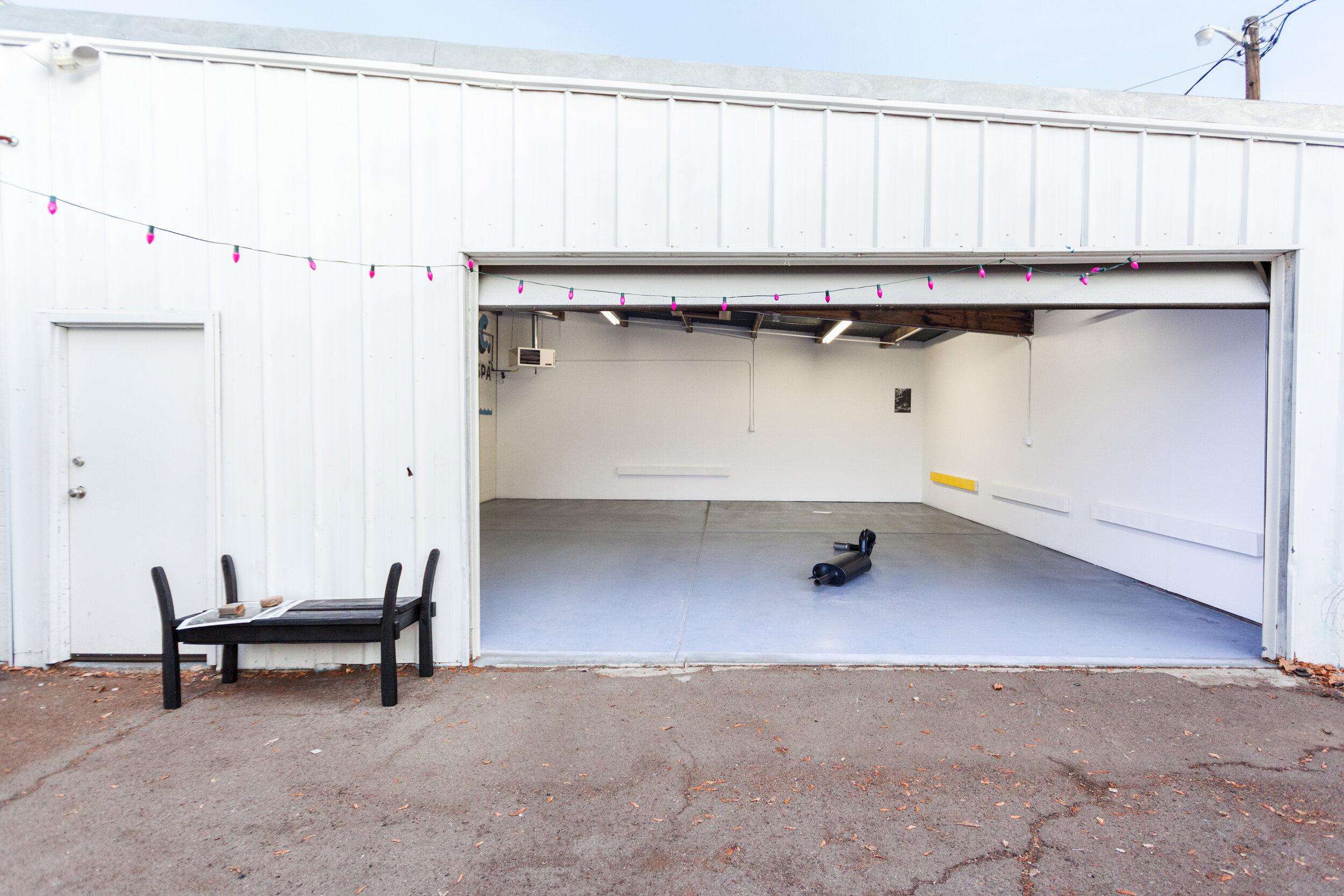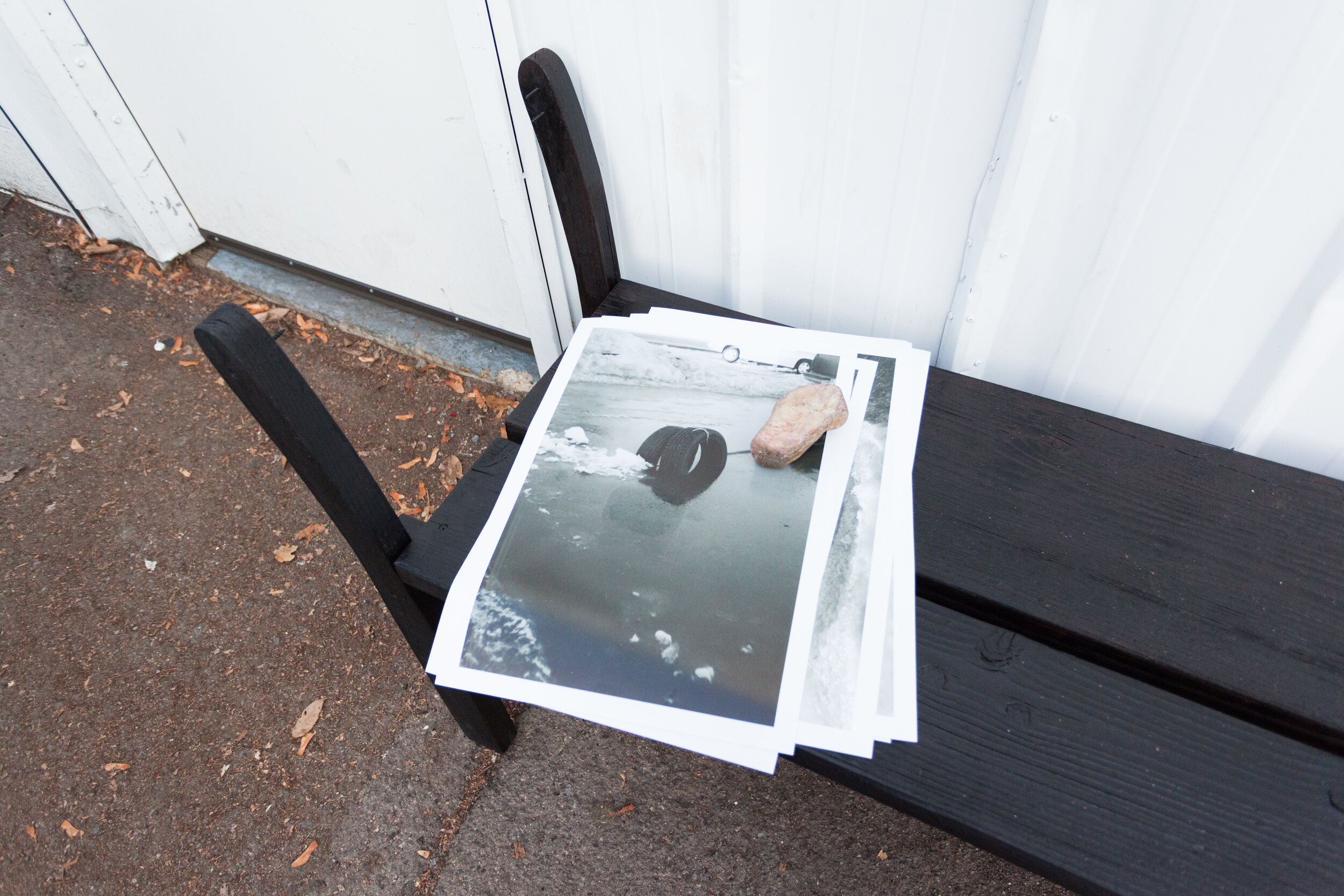Hook and ladder dreams
John Knight
December 19 - January 10, 2020
@
The Holland Project
140 Vesta Street
Reno, NV 89502
The Holland Project is pleased to present the exhibition, Hook and ladder dreams by John Knight, in the Serva Pool Gallery.
John Knight’s work considers the tension between freedom and confinement as understood in the material and emotional status of the everyday. To articulate this tension through form, Knight reflects on the constant flux between potential experience and architectural limits. Paintings fabricated in the gallery challenge the perception of constructed spaces. Industrial remnants sit staggered on the floor, as if the Serva Pool history as a body shop was out and left in a hurry. A pasted photograph displays tires trapped in a deep puddle to be frozen in the coming winter. Knight’s work results in the stages of what could have been and its collision of what is now is present. Imagine being stranded on the shoulder of a desert highway with two flat tires. In the heart of the motorcycle ethos, where is there to go? Anywhere, but here.
*A commissioned text by Rebecca Peel will be provided onsite during the opening reception.
John Knight (b. 1986) lives in Montana. He has recently exhibited at Final Hot Desert in Salt Lake City, Private Places and Muscle Beach in Portland, The American Institute of Thoughts and Feelings in Tucson, and Julius Caesar in Chicago. Curatorial projects include: Williamson | Knight, and Cherry and Lucic in Portland, and THE PINK HOUSE (Jan. 19 1995) at Bad Reputation in Los Angeles.
[Late Autumn, 2019]
Dear John,
I’ve been thinking about what you said. I’ve been thinking of The Funeral by Arturo Giovannitti:
I saw a funeral go by this morning, a black hearse driven by one black horse climbing slowly the silent street, the street unsouled and grief-stricken by the gray omens of the coming first snow.
Our first real snow came today here in Colorado, and I wonder if yours has in Montana. The kind of snow that is not just the “first” snow but the truer turning of seasons; a state of quasi-permanence versus atmospheric aberration.
I took note of what the snow does to the colors, how it changes the shapes of the clouds, creates immediate contrast. I thought about what those colors do to the psyche.
The other night, I spoke with some people about the Gaspar Noé film Irréversible and his use of a 27Hz infrasound that is caused naturally by earthquakes, wind, and avalanches. Humans -- and probably other mammals -- are viscerally disturbed by these infrasounds which are not detectable by the ear below about 20Hz, but as vibrations in the body. Steve Goodman, author of Sonic Warfare: Sound, Affect, and the Ecology of Fear says that “[a]bstract sensations cause anxiety due to the very absence of an object or cause. Without either, the imagination produces one, which can be more frightening than the reality.”
Sasha, when crossing a stream once, instinctively avoided a string of yellow leaves swirling in an eddy because, I assume, it moved like a snake. Yet, Sasha has never seen a snake before.
After this first snow fell, the wind picked up almost immediately. It glazed the horizon with crystalline haze and caused wood to groan, structures to crack. There is a crescendo of drama, then a beam of sunshine, a poised little lull, then just as suddenly, another whipping gust and the disappearance of three-point perspective -- a disorienting squall, an obfuscation of depth and focus and position.
Abstraction.
I’ve been thinking about what you said. That you’re still getting acquainted with the vastness of the so-called American West, the hallmark loneliness you speak of -- and of course, histories, tragedies, scars and stains ...
The Prisoner’s Bench:
Through here all wrecks of the tempestuous mains
Of life have washed away the tides of time. Tatters of flesh and souls, furies and pains,
Horrors and passions awful or sublime,
All passed here to their doom. Nothing remains
Of all the tasteless dregs of sin and crime
But stains of tears, and stains of blood and stains
Of the inn’s vomit and the brothel’s grime.
We can of course never ignore completely where we are. To do so would approach an asymptote of solitude and desolation, unknown even to space travelers and prisoners.
But just as in the removal and abstraction of a source arousing preternatural apprehension, the theoretical prison is a place where the mind begins to fill in what the environment itself lacks by design.
What has struck me about both of these poems you sent to me, and with my own indelible conditioning under the histrionic chaos of the alpine elements of this Western landscape, is the importance of senses, sensations.
It occurred to me today:
As the weather conditions become more extreme, the array of color becomes more limited.
At some point during our talks, you mentioned the phenomenon of Fata Morgana and I, separately, have been looking into other naturally-occurring visual phenomena, the most common here being brockengespenst and the 22o halo. 22o haloes specifically are most often and easily seen in places with cold temperatures and ice crystals in the air, thus making them more regionally-specific than some.
I wouldn’t talk about my own experience so much if it weren’t for the parallels your work makes to very specific memories of my youth. A curious, austere complex [ADX Florence] -- it’s visible from the highway that runs between Canon Springs and Pueblo and as a young person, I watched it from the half-frosted window of an aging school bus several times a year, approaching from the right side in early morning and receding on the left side in late evening, respectively. Even then, I was awed and chilled by its frigid aura, its stark implantation in an otherwise totally untenanted area.
Nobody could ever be seen outside of the structure. Inside, something seemingly unknowable.
What’s the difference, really, between a so-called outside and an in? I may never know, and so, it is artists like Arturo Giovannitti and [all day and a night poet] Spoon Jackson, for instance, who can provide subtleties and, perhaps in some way, invoke the irony of what freedoms might counterintuitively hide themselves there. All I can see is a formidable steppe under a drab-colored reinforced block.
[About a Wedge], acting upon wood for instance: essentially, a wedge is is a fundamental object of physics that, because of its simplicity, finds its function in a remarkable number of uses. In the most basic sense, though, it is typically used to divide. A wedge will open a chasm between political factions, it will split a piece of wood, it will hold open a door making a space permeable. The chasms that wedges make have a similar function to that of abstraction.
A wedge you once constructed was, in essence, a stripe painting. The stripes were merely the coalescence of disparates, cooperating as an abstraction of their individual identities. This allows us to access a vast discourse of material, color, source, tragedy, all while creating a monumental disruption. As audiences, as artists, do we fall into the chasm and seek a new way? Are we responsible for creating the wedge, or does the wedge creates itself and one simply places it, employs it?
The Funeral tells us the colors of mundane despair.
I couldn’t help but notice how these colors naturally reflect both the dejected landscape upon which the bench sits, as well
as perhaps the materials of the bench itself.
Yours, Rebecca Peel

